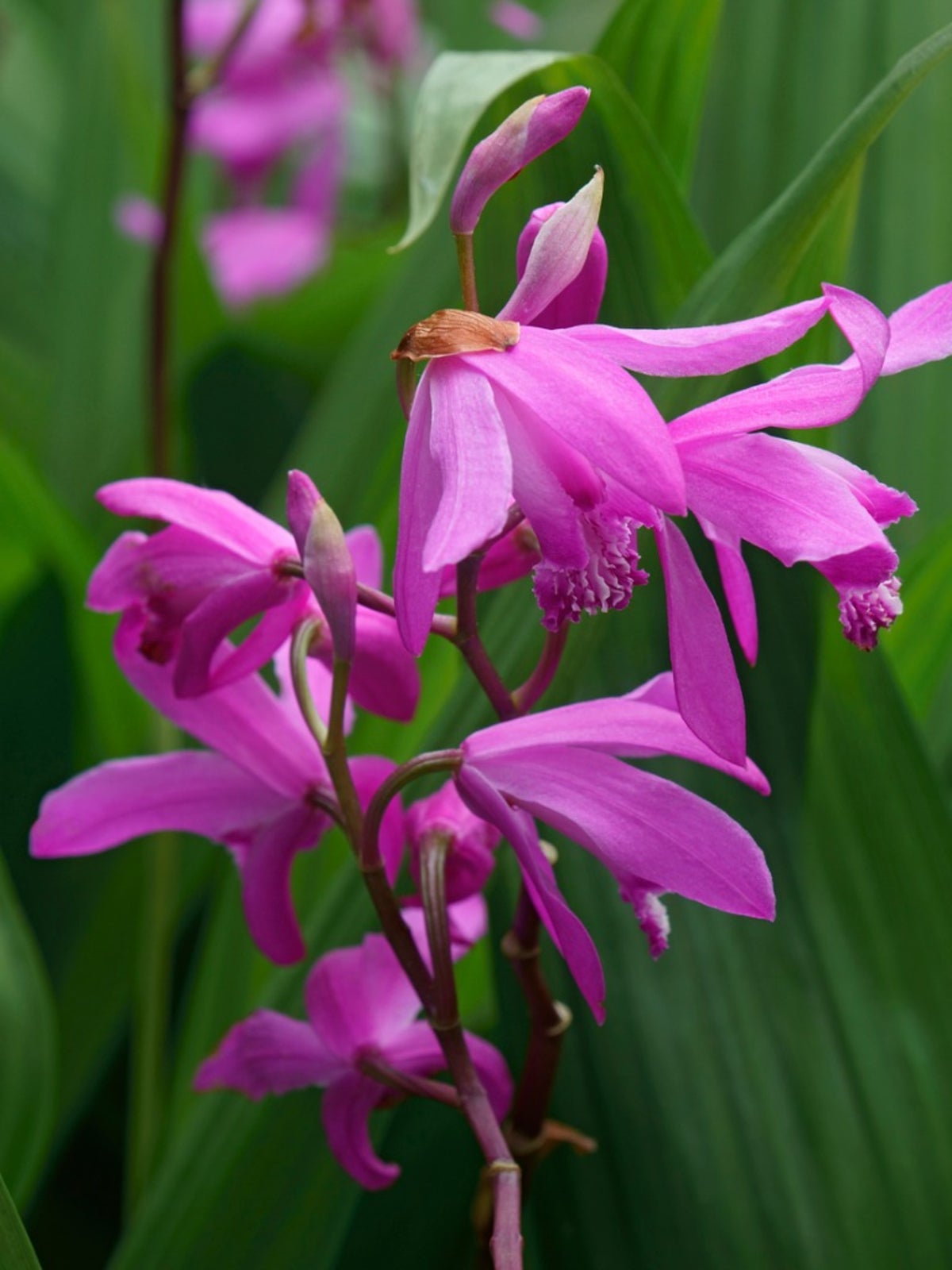Hardy Orchid Plants: Growing Hardy Orchids In The Garden


When thinking of orchids, many gardeners consider the tropical Dendrobiums, Vandas, or Oncidiums that grow indoors and need considerable care. However, when planting your home garden, don't forget about hardy garden orchids, the ones that grow outside in the ground and bloom reliably in spring. These are also called terrestrial orchids (meaning in the ground). Hardy orchid care is surprisingly easy and growing hardy orchids offers a range of bloom colors to put on a show in the spring garden. Growing hardy orchids is not complicated; they grow from rhizomes planted in the part sun, part shade garden in USDA Zones 6-9. Flowers of hardy orchid plants range in shades of white, pink, purple, and red.
Hardy Chinese Ground Orchid
Also called the hardy Chinese ground orchid, and botanically known as Bletilla striata, the plant is native to China and Japan. British gardeners began growing hardy orchids in the 1990's and hardy garden orchids now happily exist in many United States gardens. Hardy garden orchid B. striata, considered the hardiest, was cultivated first. Then came cultivars Gotemba Stripes and Kuchibeni, both of the Japanese types. Kuchibeni has two-tone flowers, while Gotemba Stripes has striped foliage.
How to Grow Hardy Garden Orchids
Growing hardy orchids here in the United States need a rich, loamy soil similar to that of the woodland floor. Morning sun and afternoon shade are ideal when growing hardy orchids. Some need the winter chill to flower properly and may take a couple of years to exhibit optimum bloom quality. Hardy orchid plants have shallow roots, so take care when doing the weeding that is a necessary part of hardy orchid care. Grow garden orchids in soil that drains well. Some of these plants do not like consistently moist soil, such as the upland species, so sharp drainage is required. Others of the wetland species prefer moist soil. Be sure to check hardy garden orchid info for the type you're growing. Amend the soil with well-composted material prior to planting, if needed. Limit fertilization when growing this specimen. Deadhead spent blooms so that energy is directed to the roots for next year's blooms. Now that you've learned about hardy garden orchids, include them in the partial sun flowerbed. You can tell everyone that your green thumb produces orchids -- hardy garden orchids, that is.
Gardening tips, videos, info and more delivered right to your inbox!
Sign up for the Gardening Know How newsletter today and receive a free copy of our e-book "How to Grow Delicious Tomatoes".

Becca Badgett was a regular contributor to Gardening Know How for ten years. Co-author of the book How to Grow an EMERGENCY Garden, Becca specializes in succulent and cactus gardening.
-
 8 Perfect Flowers To Plant With Tomatoes To Boost Yields & Banish Pests
8 Perfect Flowers To Plant With Tomatoes To Boost Yields & Banish PestsDon’t forget flowers when choosing companion plants for your tomato beds or pots. These pretty, fragrant blooms add beauty but are also highly beneficial.
By Mary Ellen Ellis
-
 Want The Longest Lasting Hydrangea Flowers? Grow These 8 Panicle Hydrangea Varieties
Want The Longest Lasting Hydrangea Flowers? Grow These 8 Panicle Hydrangea VarietiesFor ornamental shrubs that deliver the longest flowering seasons with plush blooms and delicate hues, these panicle hydrangea varieties are essential in your yard
By Tonya Barnett